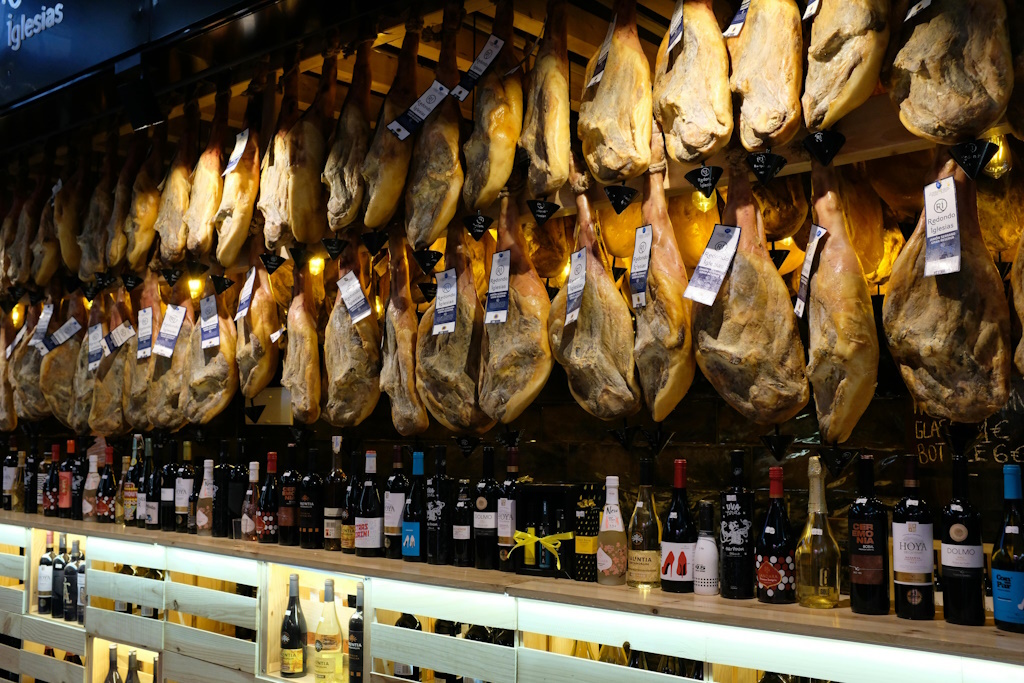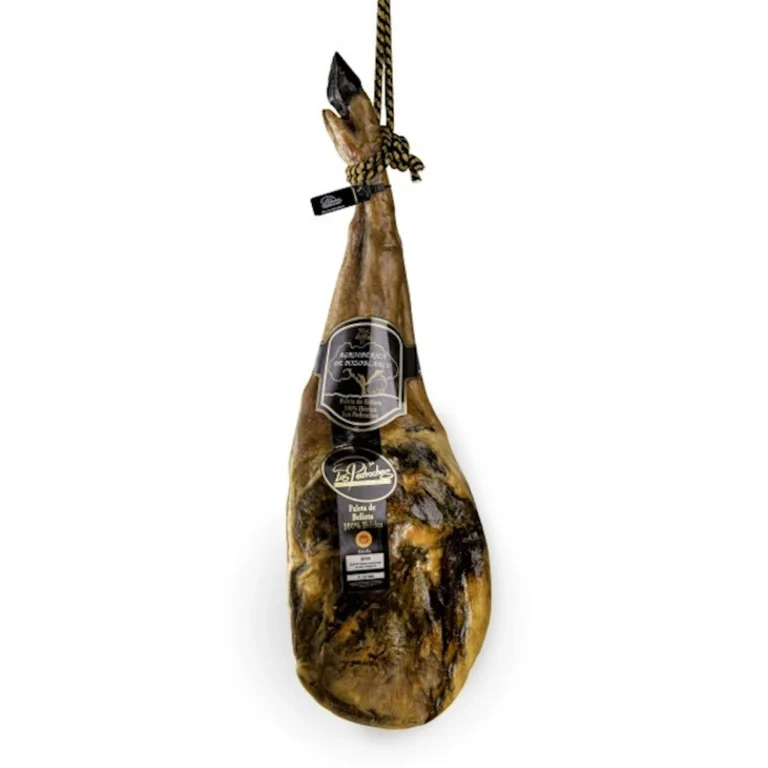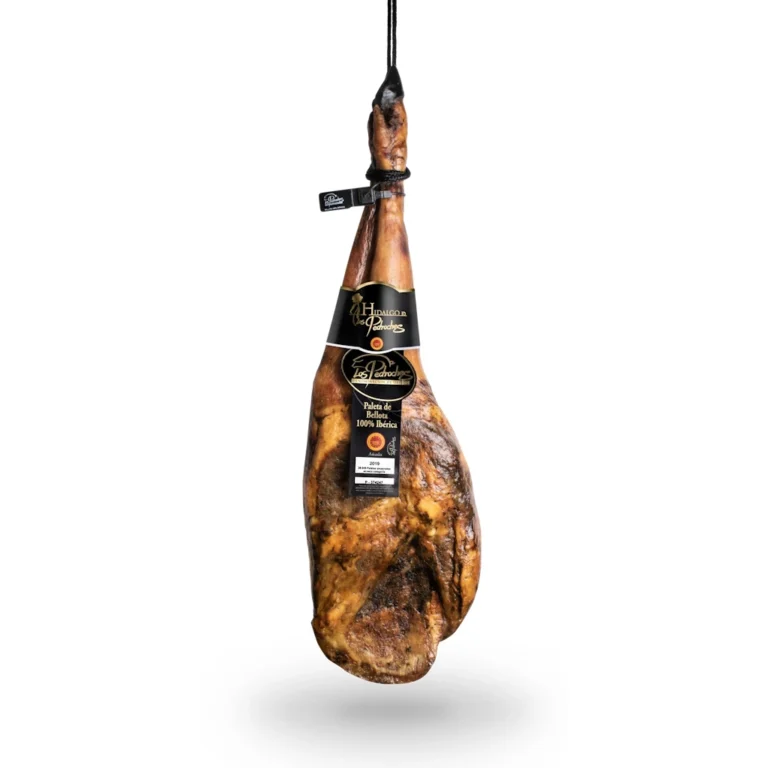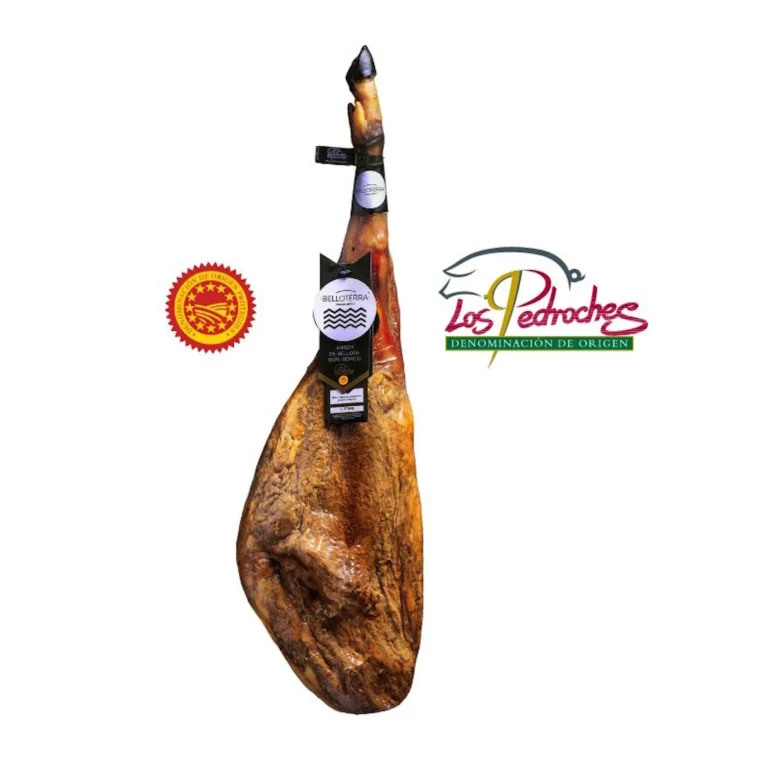How to detect the quality of a ham before opening it
- Fraud, Tips and Tricks
Indice

The Quality of a Ham
When we talk about the quality of a ham, we enter a realm where a passion for gastronomy meets practical knowledge. Choosing a good ham can be an odyssey, especially with the vast selection on the market, from humble Serrano hams to the venerated Iberian acorn-fed hams. The real difficulty arises when the product is sealed, preventing traditional examination of the aroma and cutting. But don’t worry, there are tricks that allow you to unravel the quality of a ham before you even open it.
The Secret in the Hoof: A Trick That Reveals the Quality of a Ham
The trick to determining the quality of a ham is based on observing the hoof. Yes, that small part at the end of the leg that we often overlook is a crucial source of information about the animal’s origin and life.
The hoof tells a story, reflecting aspects such as color, shape, and hardness that are indicative of a ham’s quality.
- Pig breed: If the hoof is a deep black, it is a strong indication that the ham comes from a pure Iberian pig, the famous “pata negra.” On the contrary, lighter hooves usually indicate breeds such as Duroc or Large White.
- Feeding: Diet has a direct influence. Pigs that feed on acorns during the montanera, their fattening phase in the pasture, develop darker and noticeably more resistant hooves.
- Lifestyle: This is a key factor in the quality of a ham. Free-range animals that move and graze wear down their hooves, making them harder, rougher, and duller. In contrast, pigs raised in captivity tend to have softer, lighter-colored hooves.
- The curing process: Moisture is lost during the curing process, which can further darken the hoof, especially in hams with long aging periods.
In short, a hoof that shows signs of wear, dirt, and a dark hue is a good indication that the animal had an active life and that the ham is therefore of superior quality. However, this visual clue is just the beginning.
Beyond the Hoof: Identifying an Authentic Iberian Ham and the Quality of a Ham
One of the most common mistakes is to assume that every black hoof is synonymous with an Iberian pig. To avoid confusion and ensure the quality of a ham, we must go a step further and consider other elements:
- Shape of the Leg: A genuine Iberian ham leg is usually longer and slimmer.
- Texture of the Fat: Good-quality fat from an Iberian ham should have a yellowish hue and yield gently when pressed with a finger.
- The Color Seal: This is a legal and highly reliable guide. The Ministry of Agriculture has established a system of color seals that indicate the breed and diet of the pig, guaranteeing the quality of a ham and preventing deception.
- Black: Indicates a 100% Iberian acorn-fed ham, the jewel in the crown.
- Red: Designates an Iberian acorn-fed ham (at least 50% Iberian).
- Green: Corresponds to Iberian cebo de campo (free-range pigs), animals that feed freely but supplement their diet.
- White: Indicates Iberian cebo de campo (intensive pigs).
These seals are the clearest and most reliable certification of a ham’s quality, and remain visible even on packaged products, making them easy to identify.
Other clues to assess the quality of a ham without opening it
In addition to the hoof and the label, there are other external signs that can guide you toward a ham’s quality:
- Weight and proportional size: An excessively large but light ham could indicate excess fat, which is not necessarily synonymous with good quality.
- Condition of the packaging: If the ham is vacuum-packed and you notice air inside, it is a sign that something is wrong. It could indicate a poor seal or even deterioration.
- Stains or external moisture: Although not always a sign of poor condition, the presence of stains or excessive moisture on the surface of the ham can be an indication of poor storage. In vacuum-packed hams, excessive liquid accumulation inside the package can also be a problem related to the curing or preservation process, affecting the quality of a ham.
How can you tell if a hamIs an already opened ham in poor condition?
Although the objective is to evaluate unopened hams, it is vital to recognize the signs that indicate an already opened ham is unfit for consumption:
- Strong or rancid odor: An unpleasant aroma is the first indication of deterioration.
- Slimy or excessively dry texture: If the surface feels sticky or, conversely, too hard and dry, this is a bad sign.
- Presence of green or black mold: Although white mold is common and desirable in curing, green or black mold indicates contamination and a severe decline in the quality of a ham.
- Acid or bitter taste: If tasting a small portion reveals an unpleasant taste, discard it.
These symptoms are not always related to a problem with the ham’s origin, but they do directly impact the culinary experience. And, most importantly, food safety. Knowing how to identify these signs is essential to fully enjoying the quality of a ham.
With these tips, you won’t need to be an expert to recognize the quality of a ham. With a little observation and knowledge, you can choose with confidence and enjoy one of the jewels of gastronomy. Ready to put your new skills to the test?
Nota importante: aceitedelcampo.com promueve el consumo del aceite de oliva virgen extra por sus cualidades culinarias y beneficios para la salud. No obstante, no debe sustituirse ningún medicamento o tratamiento actual sin la orientación de un profesional de la salud.
Productos que te pueden interesar
16,50 € – 320,00 €Price range: 16,50 € through 320,00 €
140,00 € – 156,00 €Price range: 140,00 € through 156,00 €
18,50 € – 470,00 €Price range: 18,50 € through 470,00 €



